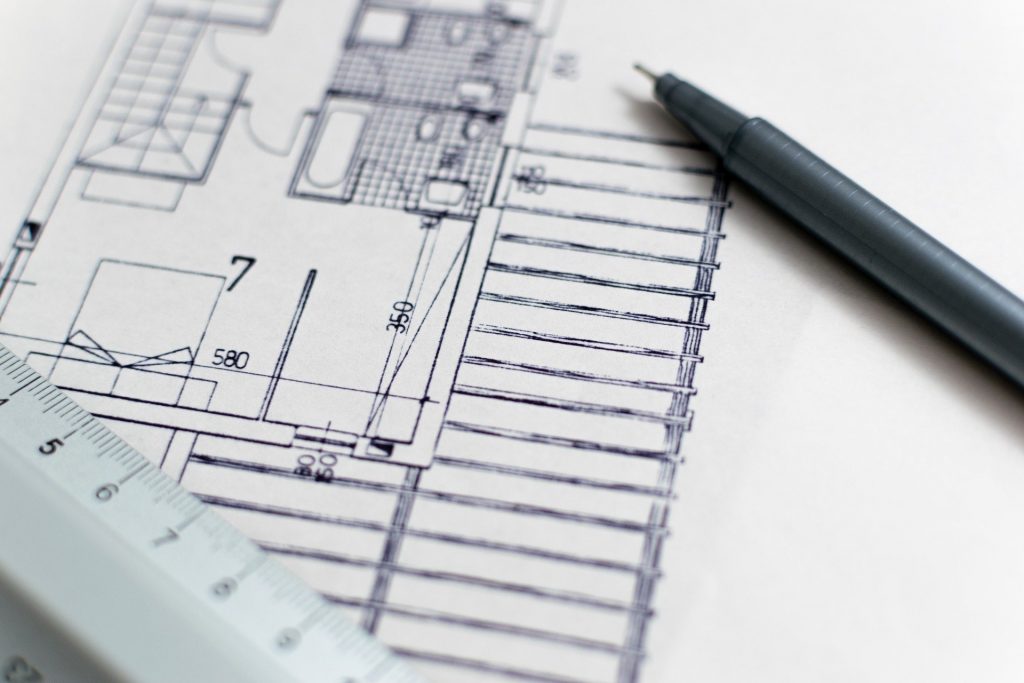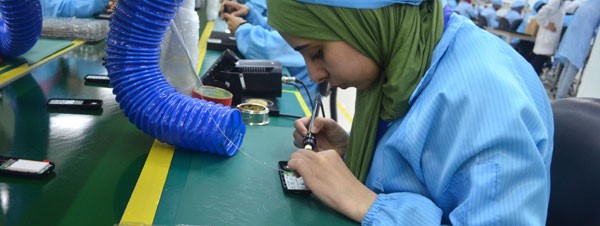The Biden administration is putting climate change at the “center” of its foreign policy. That opens the door for Egypt to promote eco-sustainable investments by capitalizing on the slew of initiatives available through U.S. federal agencies.
For many Egyptians, concerns about climate change and environmental crises might feel like fiction. With Egypt’s large swaths of desert, drought-fueled forest fires such as those in Australia in December 2019 are not a concern, and rainfall here has yet to reach the torrential levels experienced by European countries in July when 242 people died. Instead, average Egyptians might be more likely to notice the shorter winters, heavier-than-usual rainfall, and slightly increasing summer humidity.
They would be mistaken
The United Nations Development Programme (UNDP) has sounded alarms that the country needs to expand efforts to create a more sustainable green economy. “Egypt’s large population makes the country extremely vulnerable to climate change,” said the UNDP in the Country Brief on their portal. “Its densely populated Nile Delta is seriously threatened by sea-level rise.”
Global experts stress the need for countries to take concrete steps toward meeting the U.N.’s 2030 climate targets. “We don’t want to end up in a situation where we know we need [green] solutions, but no one is taking action … because 2030 feels like we still have a little bit of time,” said Antonia Gawel, Climate Action head at the World Economic Forum (WEF), in November. “We don’t… If we don’t act today, it will be too late.”
The Egyptian government and private sector have tremendous opportunities to boost eco-sustainable investment by cooperating with America, whose federal agencies have been launching green initiatives targeting low- and middle-income nations. “Partnerships are the key to the effective delivery of timely and relevant climate science and services,” Bilal Ayyub, professor and director at the University of Maryland, said at the U.S. Center at the UN’s Conference of the Parties 26 (COP26) in November. “The challenge is beyond the capacity of a single government or organization.”
Climate in Egypt
The World Pollution Index (WPI), published by Numbeo, a data-aggregating portal, ranked Cairo as the 12th most polluted city in the world by mid-2021, with air pollution the primary culprit in the city and throughout Egypt. The index estimated air quality at “10 to 100 times more polluted than the worldwide acceptable rates.”
The index’s analysis said the rise to such levels in 2021 is possibly due to the country’s large cement companies and other polluting industries. They highlighted lax enforcement of environmental laws in those strategic industries, which gave them few incentives to invest in a more eco-sustainable approach to manufacturing.
The WPI annex report also cited the high density of factories in “industrial cities” such as Badr, 10th of Ramadan and Borg El Arab, making them emission hubs that cause significant health problems for workers and nearby residents. It also noted that high-polluting industries are usually very close to low-polluting factories and residential towns, which magnified air pollution. According to the index report, Egypt loses 1.4% of its GDP annually due to air pollution.
So far, the government has focused on promoting renewables to generate electricity, lowering dependence on fossil fuels, and decreasing carbon emissions. Additionally, the state is implementing a “Car Scrappage Initiative” launched in 2019, replacing vehicles over 20 years old with locally assembled cars that use natural gas. That fuel is 6% to 11% less polluting than petrol, according to the U.S. Department of Energy.
Meanwhile, the Ministry of State for Military Production started rolling out electric buses with 60% locally made parts in some suburbs. Additionally, state-owned El Nasr Automotive is working on manufacturing electric vehicles for personal use and taxis.
The government is also introducing high-speed rail and monorail, powered by electricity, to connect the westernmost parts of Greater Cairo with the New Administrative Capital.
Those initiatives and others are under the “Go Green” umbrella program that Environment Minister Yasmine Fouad announced in 2019. That program aims to achieve the goals of Egypt Vision 2030, announced in 2015. “The ministry’s priority is to work with the rest of the government to create an enabling environment for green growth and investment,” she told the media in September. “We plan to flatten the environmental [deterioration] curve via sustainable development.”
In the 2021 Renewable Energy Country Attractiveness Index, published by EY, which assesses the investment environment for a country’s renewables sector, Egypt moved up six places to 20th. That should help the government achieve its goals for clean energy to account for 20% of the country’s energy use by 2022 and 42% by 2035. According to the latest government data, Egypt’s energy mix was 11% from renewable sources at the end of 2019.
The WPI report acknowledged Egypt’s Vision 2030 and other efforts. However, it noted that the government and private sector need to do more. “In the coming years, climate change and its environmental implications will have detrimental effects on businesses … yet many … have not yet addressed the issues with the degree of urgency they require,” it noted.
U.S. partnering
In a January executive order, U.S. President Joe Biden decreed that new U.S. foreign policy would increase cooperation with low- and middle-income countries across various sectors. “Domestic action must go hand in hand with United States international leadership, aimed at significantly enhancing global action,” read the executive order.
A core pillar of Biden’s foreign policy strategy is partnerships to achieve net-zero greenhouse gas emissions by 2050 in the U.S. and partner countries. “It is the policy of my administration that climate considerations shall be an essential element of United States foreign policy and national security,” said the executive order. “The United States will work with other countries and partners … to put the world on a sustainable climate pathway.”
That has opened the door for several federal agencies working with low- and middle-income countries, such as Egypt, to offer programs to help them cut carbon emissions. “The president has tasked agencies … to help our partners adapt to and manage the impacts of climate change,” Vinai Thummalapally, acting director of the United States Trade and Development Agency (USTDA), told the media in November.
USTDA
Created in 1992, the USTDA is an independent agency that aims to advance economic development and U.S. commercial interests in developing nations. “Our role is unique, “said Thummalapally. “We provide grant-based funding for activities such as feasibility studies, technical assistance, and pilot projects.” The focus now is on eco-friendly projects, helping turn them into “bankable deals …. that can be financed, implemented and sustained.”
Accordingly, the USTDA joined the Net Zero World Initiative, launched in November by the U.S. Energy Department to help “partnering countries harness the power and expertise of the U.S. government … to scale up clean energy deployment and investment,” noted the program’s website.
The agency also entered a coalition of nine U.S. industry associations and government bodies to create the Global Partnership for Climate-Smart Infrastructure initiative, which partners emerging and developing countries in eco-friendly projects. Thummalapally noted that the Nuclear Energy Institute and U.S. Nuclear Industry Council are the newest members of the initiative. “They aim to facilitate the deployment of the latest civil nuclear technologies to help our partners achieve the zero energy sector goals,” he explained.
In 2020, the USTDA supported clean technology projects worth $5 billion, said Thummalapallay. By 2023, that figure should increase to $60 million in programming to tackle the climate crisis. “The best way to meet our partners’ infrastructure goals is through collaboration,” he stressed.
Part of the work is promoting green infrastructure projects (See our In Depth: Seeking private investments). “Infrastructure investments last for decades,” said Thummalapallay. “As a result, it is critically important to plan and build projects today that promote long-term decarbonization.”
Some of the projects announced by the USTDA in November include funding a feasibility study to expand electricity access across West Africa. “Our contribution will help create a new transmission line and integrate renewable energy into a more modern and reliable regional grid,” said Thummalapallay.
The agency has also worked with the Algerian government on updating the power transmission system operated by the Société Algérienne Gestionnaire du Réseau de Transport de l’Electricité (GRTE). “Our partnership with USTDA will pave the way for us to modernize and [digitize] our electricity network using the expertise of American companies,” said Nabil Yousfi, GRTE’s chairman and CEO. “Our electricity transmission network will play an important role in Algeria’s transition toward green energy.”
Under the Global Partnership for Climate-Smart Infrastructure initiative, the USTDA announced the electrification of healthcare in Nigeria in November and followed up with Zambian officials on an earlier project to install solar microgrids.
USAID
The focus of USAID (United States Agency for International Development) is on tackling emissions from passenger and commercial vehicles, said the agency’s Climate Change Coordinator Gillian Caldwell in November. She noted that transportation alone accounts for 25% of global greenhouse emissions and is growing fast as fossil-fueled car sales rise worldwide. “Changing this … sector is critical if we are serious about tackling the climate crisis, and the United States is definitely back in the game,” she noted.
Caldwell stressed that USAID’s strategy is to “prevent those modes of transport [from] doing more harm than good. We can’t do without them. We drive to work, visit family, get food, move goods in supply chains. The lack of transportation threatens livelihoods. It is a very serious problem.”
Promoting eco-friendly vehicles in poor and developing countries won’t be easy, as their manufacturing costs are higher than fossil fuel automobiles. However, Caldwell is optimistic. “There are tremendous opportunities to approach this challenge of getting [clean] transportation [vehicles] into low and middle-income countries,” she said. “They are not solely for wealthy countries.”
Those opportunities arise from data that indicates that “the global south may be the first, not the last, to reach competitive mass-market electric mobility at scale,” said Caldwell.
To capitalize, the agency created Development Innovation Ventures, an open innovation program funding eco-solutions in USAID’s markets, in collaboration with the U.S. Development Finance Corporation (DFC). The first project was establishing a mobility startup in Rwanda called Ampersand, which builds electric vehicles and charging stations. Ampersand’s solution to long charging times involves vehicle owners swapping their drained batteries for fully-charged ones at stations. “Those batteries can be used in several categories of transport modes,” said Caldwell.
Ampersand, in early November, got a $9 million loan from DFC to scale up operations in Rwanda and expand to neighboring Kenya. Caldwell said it is DFC’s first “meaningful” loan for electric mobility, which “signifies growing investor confidence in Africa’s rising e-mobility sector. The goal is several thousand [vehicles] by 2022.”
To develop clean transportation solutions such as these, USAID is collaborating with the U.S. Department of Energy’s National Renewable Labs.
USAID also focuses on developing policies and legislation to attract more investments in clean transportation in emerging markets. “We are focused on system change,” said Caldwell. That includes creating an environment that promotes decarbonized vehicles, zero-emission fuels, and stricter fuel and greenhouse emission regulations. “It is critical to deal with the enabling environment, not just the technical assistance,” said Caldwell. “The aim is to move beyond fossil fuel infrastructure.”
U.S. climate funds
The Biden administration has had the $8.5 billion Climate Investment Funds (CIF) since 2008. This year, it founded the $500 million-a-year Clean Technology Fund 2.0 (CTF 2.0). That fund will go a long way toward realizing the U.S. government’s plans announced in 2021 to double its international climate finance commitment and increase its adaptation finance sixfold. The latter supports projects eligible for the Emergency Plan for Adaptation and Resilience, a presidential initiative launched this year to combat climate change.
Speaking to the media in November, CIF head Mafalda Duarte described the fund’s challenge as “how do we use scarce public capital to unlock much larger flows to private investment in developing countries?”
So far, CIF has encouraged the private sector to mobilize “three times the [$8.5 billion in] public capital,” said Duarte. The fund has supported large-scale projects, taken risks private investors shunned, and bet on long-term returns. “We are focused on strategic investments and bringing together financiers who know the market and the countries,” said Duarte.
Another CIF priority is to finance projects in new markets, mainly via CTF 2.0, which focuses on emerging markets’ fast-growing tech sectors and sustainability initiatives. “Our numbers [since 2020] are showing significant increasing interest from investors on thematic bonds, [such as] green bonds [and] sustainability bonds,” she explained.
Duarte said that private investors prefer projects that involve the CIF or CTF 2.0 because each project is subject to “due diligence from development banks, which gives investors confidence.”
Joining the movement
Large companies in low- and middle-income countries, such as Egypt, can now enter a First Movers Coalition (FMC) announced at the COP26. The FMC is a joint effort of the U.S. State Department and World Economic Forum to partner with large-scale companies worldwide. Some of the American founding members are Amazon, Apple, Bank of America, and Western Digital.
The coalition’s member companies will commit to purchasing only eco-friendly products and services from eight high-polluting industries, according to the announcement. Those sectors include chemicals, cement, steel, aviation, direct air capture, shipping, and trucking. Together they comprise “one-third of the world’s carbon emissions,” noted the FMC website.
The coalition hopes its members’ considerable buying power will force those industries to invest in eco-friendly products and transform their vast supplier networks. “This will empower suppliers to develop and scale their innovations between now and 2030,” the FMC said.
The FMC also could connect suppliers with companies in the coalition, making compliance with preset environmental standards more straightforward. “These stakeholders will include suppliers capable of demonstrating and scaling the technologies needed for coalition members to meet their purchase commitments,” the FMC noted. The target is to reduce net emissions to zero by 2050 by bringing the “right technologies … to commercial scale within the next decade.”
The 50%, 1.5°C future
Partnering with the United States to accelerate clean climate projects could prove a vital step toward meeting 2030’s U.N. Sustainable Development Goals standards and 2050’s net-zero ambitions.
Two dynamics currently push the need for fast action on climate change. The first is to maintain the world’s temperatures at 1.5°C above pre-industrial levels. The world is currently at 1.1°C, and experts calculate that with current pollution trends, Earth will heat up by 2.3°C by 2030. “It is one of the largest challenges human civilization has to face,” said Josh Freed, senior vice president for the climate and energy program at the think tank Third Way, in November.
The second challenge is to bring the technologies currently in the prototype stages to the commercial stage to meet the 2030 and 2050 targets. “If we have any hope of reaching net-zero by 2050, half the cuts need to come from technologies still in the early stages of development,” said Freed.
Gawel from WEF stressed that governments and companies need to allocate significant investment budgets to ensure “that by 2030 we have those solutions ready to enable them to come into play to facilitate the decarbonization in industrial sectors,” she said. “We need five years in some cases just to build those technologies [let alone scale them to commercial levels].”
Freed notes that the eco-sustainability ball is in governments’ court. “National governments need to lead the way on innovation because there is simply no other set of actors with the incentives to do so,” he said. “Without technological innovation and associated changes in institutions and business models, the world is not going to avert the worst changes of climate change.”







